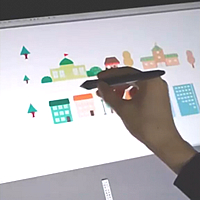
A unified user behavior model for trajectory-based tasks with different types of path constraints
Zhang H, Huang J, Tu H W, et al
Sci China Inf Sci, 2023, 66(10): 204101
An important research branch of human-computer interaction (HCI) is to develop predictive models for human performance in fundamental interactions. On today's graphical user interface (GUI), users often implicitly perform various trajectory-based interactions, such as navigating through menus, entering the boundary of a button, and lassoing regularly arranged icons. These interactions allow users to select targets or input commands in user interfaces by drawing strokes. Based on these fundamental interactions on GUI, researchers explored three typical trajectory-based tasks with different path constraints: the steering task, the goal-crossing task, and the steering-crossing task. For trajectory-based tasks, the movement profile information encompassing trajectory, speed, and cursor acceleration emerges as a valuable tool for characterizing user performance. Such information could be crucial in understanding user behaviors in user interfaces. However, existing models tend to fixate on the prediction of interaction outcomes such as movement time or error rates. This prevailing focus creates a theoretical gap, resulting in a challenge for HCI practitioners to gain a comprehensive grasp of the intricate and dynamic nature of user engagement during trajectorybased interactions.